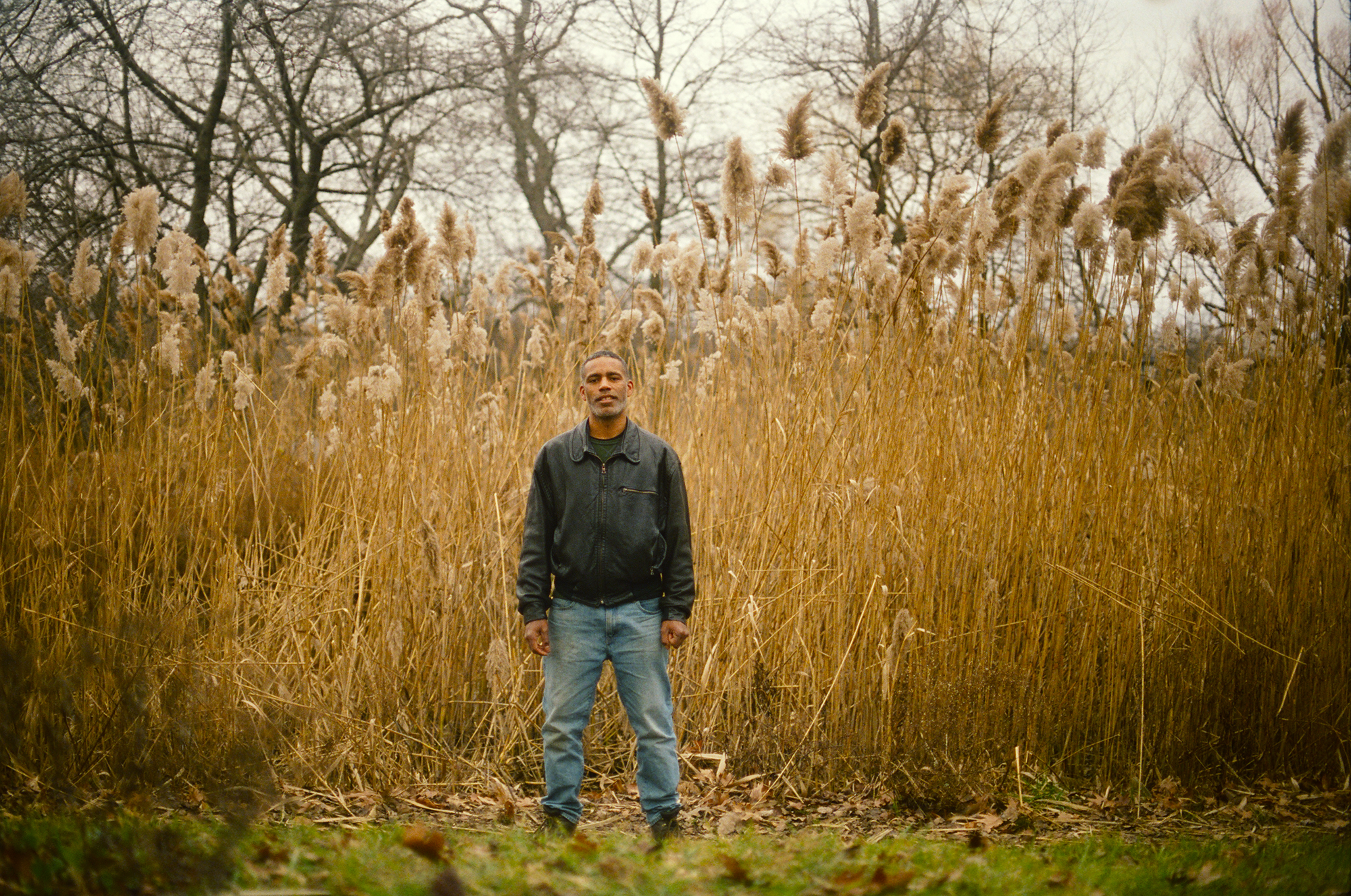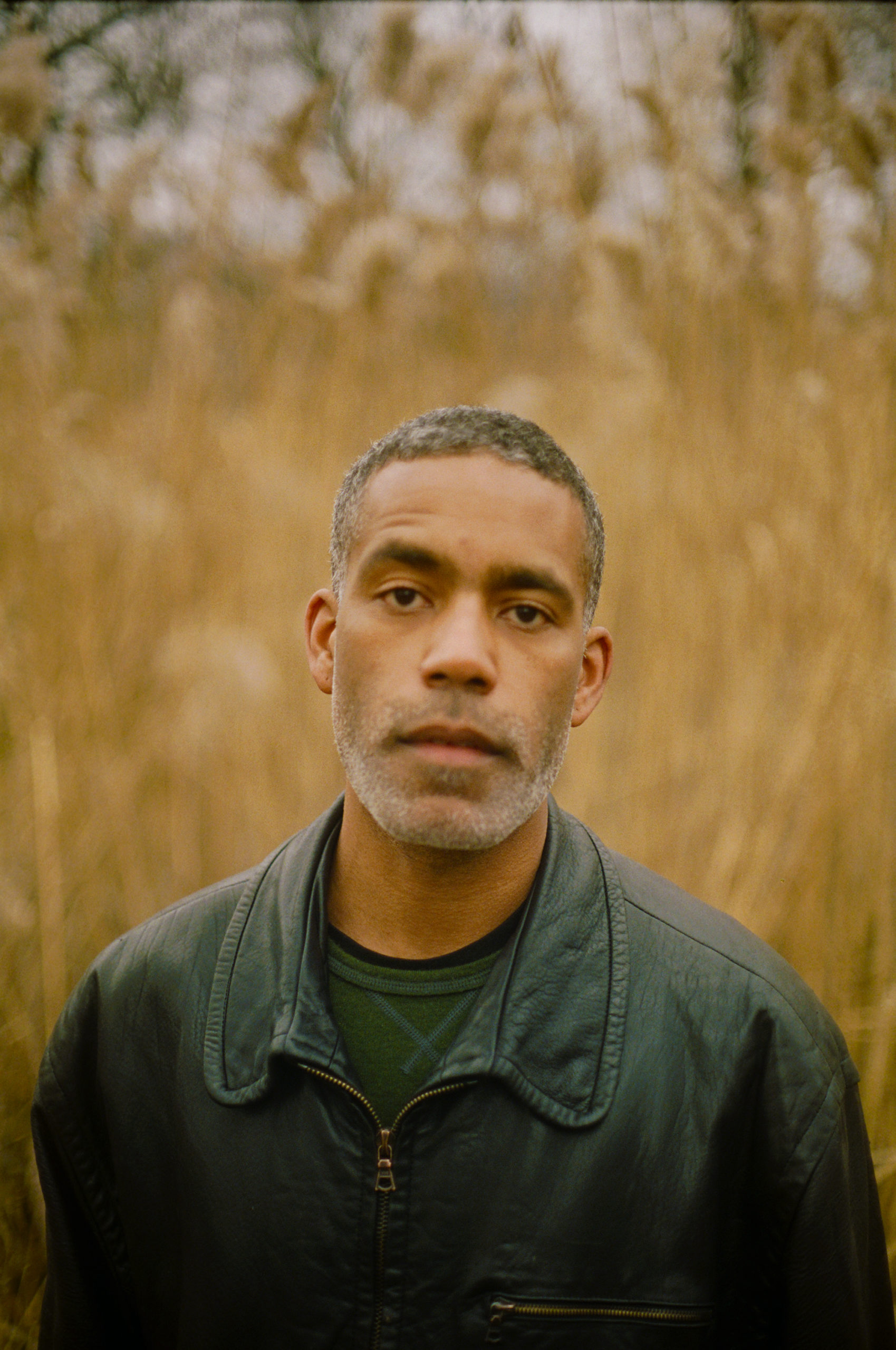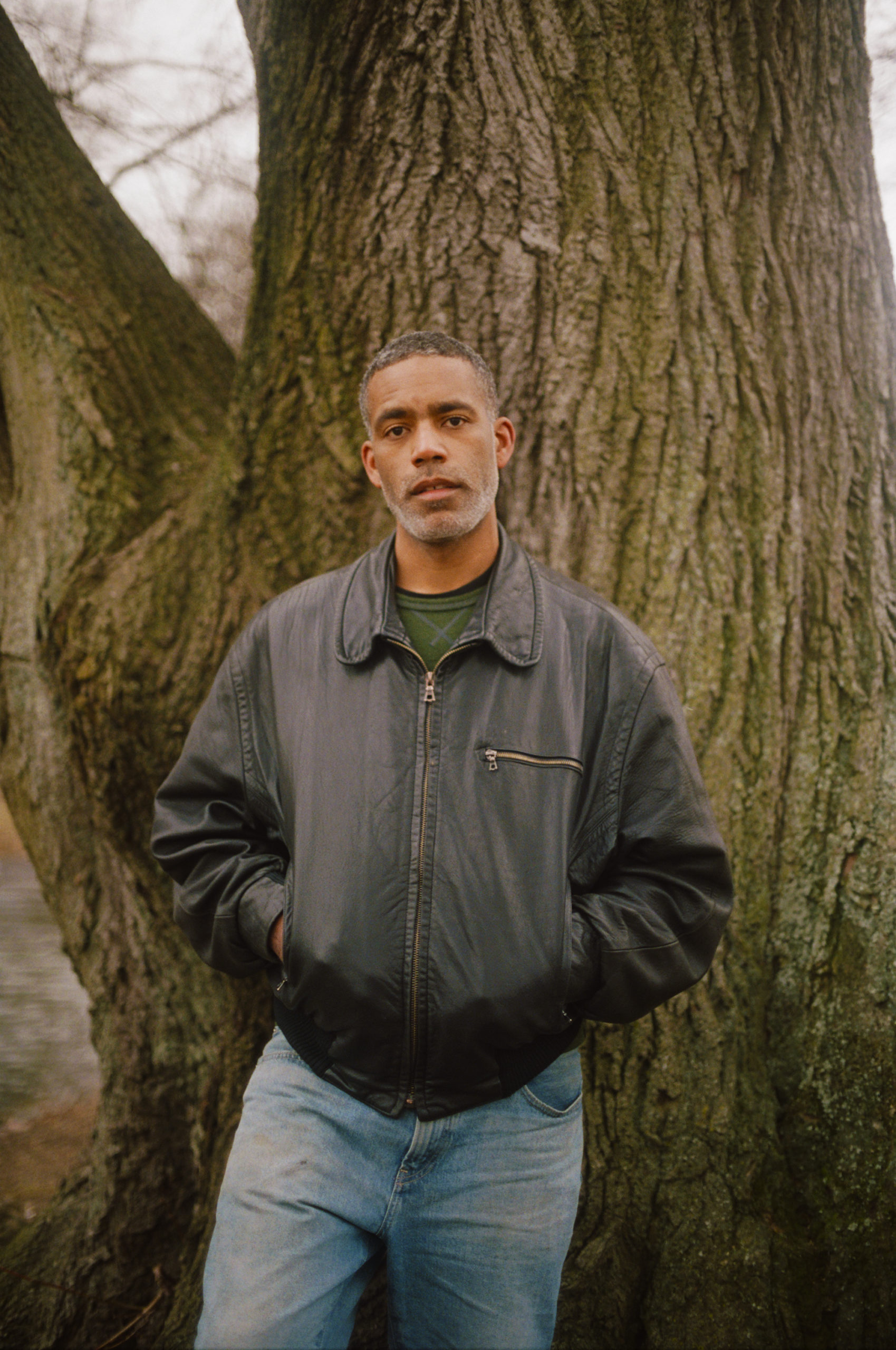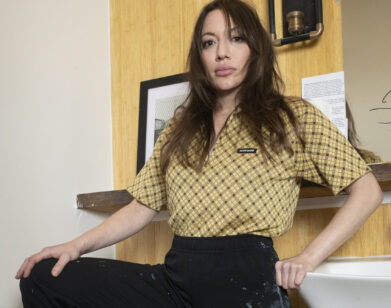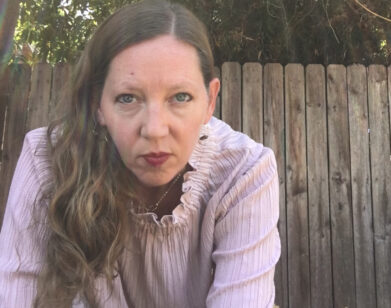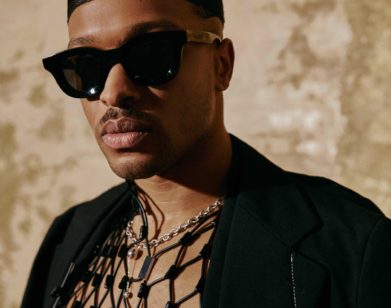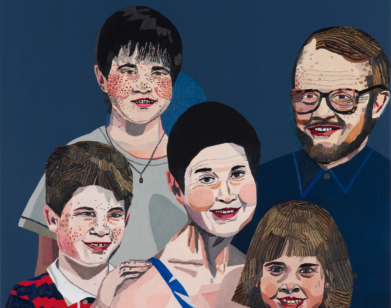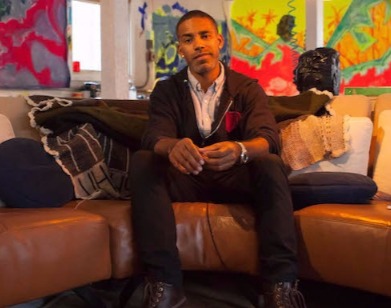NATURE
Cy Gavin and Hilton Als on Surveillance, Sequoias, and Self-Preservation
Cy Gavin stayed up most of the night in his upstate New York studio working on paintings for his spring show at Gagosian, but he was wide awake the next afternoon to Zoom with his friend, the writer Hilton Als. They chatted about art as a refuge, Gavin’s willingness to tell people to fuck off when necessary, and his newfound passion for gardening.
———
CY GAVIN: Hey, Hilton. Where are you? At the library?
HILTON ALS: No, it’s my apartment.
GAVIN: This is the first Zoom call I’ve had.
ALS: You’ve never done it before?
GAVIN: It’s been a year or more.
ALS: What were you doing that whole year?
GAVIN: I guess, talking to people in person infrequently.
ALS: I’m so happy to see you.
GAVIN: Likewise.
ALS: I want to start from the beginning. When I first saw your work, you were working in a bunch of different mediums. You were doing a little video.
GAVIN: That’s true.
ALS: Now you make these paintings that feel very monumental to me. I wondered where the turn from multimedia happened.
GAVIN: When I was a little kid, I was always painting with no intention of it being a job. Up until a half-decade ago, the paintings always had the underpinning of drawing. Even if it wasn’t visible, it was a preliminary way of understanding what the painting I was working on could become. There was space for the painting to move one way or another, but it was still fixed as this idea that came before. One of the reasons I no longer work with video is because it wasn’t nimble enough. It felt similar to where I was with painting—no life. Just creating the idea and executing it.
ALS: You had to be more porous if you were going to be open as an artist?
GAVIN: Yes, for me to want to take the time to make a painting, for weeks on end, and have the anxiety and mental burden of doing it, I would not want to be bullshitting. It’s a waste of my time. I want to do other things in my life, and I don’t want to be doing anything that’s not honest. I didn’t think that the work I was making was dishonest, but it was fundamentally about a visual equation that could be solved. In that way, then, a painting becomes really just an illustration.
ALS: Where did you grow up?
GAVIN: In Donora, Pennsylvania—I was raised in a very small town. I was lucky and through a teacher I ended up getting a scholarship to art school in Pittsburgh at Carnegie Mellon. It was very accidental. It was not part of the plan of any adult around me.
ALS: When I first saw your work, I noticed that a lot of it was related to nature—trees, the moon. How did you start doing, for want of a better phrase, these nature studies?
GAVIN: The town I was raised in is in the Rust Belt. All those towns were built around 1900. Mine is right on an oxbow of the Monongahela River. The towns there were built to support the steel industry and it was an easy way to move raw materials via barges and railroads. But because the steel industry had gone away decades before I was born, the economy was gone. So many buildings were knocked down and nature’s reclaiming that region in a rapid way.
ALS: Nature just comes through the concrete.
GAVIN: Yes, and also covering entire mills with wild grapes. So there was always this industry and man-made world. Where I grew up, there was a lot of pollution and mine runoff because of coal mining, and it made the waterways very sulfuric and stank and yellow. So I had a really antagonistic view about the development. I felt safe in the woods, which is something that I think a lot of people don’t feel. I felt really unobserved and free being in spaces that were not about surveillance in my childhood.
ALS: Surveilled by parents or by cops or both?
GAVIN: Both. I was raised in an intense fundamentalist Christian situation that was problematic in many ways. I didn’t have the freedom to go alone where I wanted, except to the library. That was the only place I was allowed to go without people supervising me, which was the same for my older sister. Now she’s a librarian! I think we were both saved because of libraries. They hung my work on the wall, and it wasn’t like a refrigerator with a kid’s drawing on it. They knew I painted because they saw the books I was checking out—on Velázquez, Rembrandt, Titian, and all kinds of do-it-yourself books. That’s why I started painting, it was just because I wasn’t allowed to do anything and I needed a space to have coded communication, even if it wasn’t for other people. I didn’t have a bedroom door—there was no privacy whatsoever. And painting was a way of engaging with a skill, seeing myself copying artists that I admired. It wasn’t until high school that I could allow myself to be seen in the paintings I was making. And it still was a very unsafe space.
ALS: It means that you were making yourself vulnerable.
GAVIN: It was dangerous. It was a threat to people around me. And it was too much my own thing. It became a threat to my family that I painted rather than concern myself with the Bible or whatever. At that age, I realized that image-making is actually extremely political.
ALS: Is privacy still something that’s important to you?
GAVIN: For sure. Not privacy for privacy’s sake, but having the ability to enter a state of poise as an organism is critically important to me. As much as certain kinds of people can be the enemy to that poise, I’ve needed privacy that way.
ALS: How do you determine if they’re enemies to that?
GAVIN: If they don’t respect requests for space. I’m not painting in the way I did when I was younger. There’s no drawing underneath them. They go wherever they go. And it’s incredibly exhausting mentally to have that volume of decision-making. Having a phone going off and some stupid request and then some email, there’s no space in my life for that. I can’t return to the headspace that is required to even get there. Painting feels like divination in a real way. And it’s taken me a long time of making mistakes and having bad judgment—that has allowed me to constantly appraise what the health of my practice is. You have a career and then you have your practice. I don’t care so much about my career, but I really care about my practice. And that is so tied up with my own organism. No one is there besides the individual to safeguard that from people who don’t care or who just see what I’m doing as a means to an end.
ALS: Did it take you a long time to learn how to protect yourself?
GAVIN: I think that was the amazing gift of my horrible upbringing. I have absolutely no problem telling someone to go fuck off. That wouldn’t be my first thing to do, but I don’t feel like I’m going to be cajoled into doing something. If it doesn’t work, I can make that determination with love and tell somebody that it doesn’t work. I think that fighting as a young person was in service of that. And also realizing that self-advocacy is integral to being respected in general. Some part of that is definitely intertwined with race and all kinds of things in this country where people do not always want to afford you dignity. I am not waiting around to have people confer that to me. If I can see that they’re not going to give it to me, I don’t want to know them. So much of showing art is interacting with these venal aspects of a market that have taught me to distance myself from it. And also just to find ways of creating barriers between me and destructive forces that are outside of the studio and outside of my friends and the people who actually care about me.
ALS: I always want to ask painters about the physical pleasure of painting. It feels like it’s such a primal relationship that the body has to paint. Do you feel that?
GAVIN: Teaching painting, I’ve seen that. People who also start painting as a hobby are seduced at some point, especially with oil paint, with manipulating the viscosity of the paint. There’s something physically satisfying about that. But it’s like a ceramicist who loves the feeling of the material. I don’t think it necessarily serves the outcome to have that affinity. It can become indulgent. It’s like thinking and speaking in a way that is solely about the way it sounds. I wasn’t drawn to painting for that reason. I was drawn to painters like Frans Hals, who used marks to convey both color and form, not just using paint as an inkjet printer. To me, it’s a much harder and more economical way of making a painting. Again, when you strip away all of the affect, it just essentializes something. I’m attracted to paintings that don’t have a ton of filigree and red herrings everywhere. For me it’s about making decisions to distill an image to its most pungent form.
ALS: A few years ago, you moved upstate and you got into gardening, but it has a very political purpose. Can you talk about that?
GAVIN: When I moved here in 2016, it was a week before the election. I encountered a lot of hostility where I moved, which was a commercial space a mile from where my studio is now. There was a reason to want to leave almost daily. I think I told you about this incident where a person appeared outside and started shooting a gun off at ten in the morning for an hour and a half at very close range. They left this large top of an oil drum that they’d been shooting right in front of the door. Honestly, that was one of a string of things that made me think about moving away or arming myself. But I couldn’t move. I had agreed to do shows, I had expended my own funding on a dumb residency experience that cost a tremendous amount of money. And so I couldn’t have afforded to move. But leaving the building became difficult. Stepping outside was stressful. Every one of my movements was being noted on camera, and it was very uncomfortable.
ALS: Again, surveillance.
GAVIN: You have no idea. So I had to make that space usable for me to be able to have poise in my body. I had to be able to be outside and move freely. The result was that I started planting a garden to just affirm that I had no intentions of leaving. I immediately started the day of the shooting. I just thought it was funny, but it forced me to go outside and confront that discomfort for myself, which was very difficult to do. Then I got very swept up into its capacity to be communicative in that it’s also dealing with color and texture and volume and is also living and out of control and it’s not something you can will into being. Gardening makes it sound more like I’m tending things. I don’t know what I even call it, but I’ve spent a lot of energy with plants and talking about plants.
ALS: I felt like there were some gardening references in your newest paintings. The orange work, for example—
GAVIN: That’s a painting of a pine tree that turns bright yellow in the winter. I started planting these trees that are just garish; they’re reforesting what was once farmland. I think a lot of planting is reckoning with time and I think that that was really essential for what we’re talking about, trying to find poise. The rhythms of planting are at a different scale compared to a human lifespan. It forces a different kind of relationship to time and urgency and false ideas of urgency. So a lot of the paintings that I’ve been making recently were made when I was planting a long border to give me some privacy from a really busy road. This studio where I’ve moved in 2020 is much more exposed. And at the time of me moving here, the George Floyd protests were happening in Albany. Down here, there were counterprotests where the police were allowing people to get beaten up and then arresting certain factions and only certain factions. So there was a ridiculous energy here when I first got this studio. All my planting activities are absolutely in the same spirit as where I was at my previous studio, where it was, on one hand, a matter of affirming that I’m not going to go away because someone had driven by and called me a name or thrown a bottle at me or whatever the fuck. But actually, I’m not only staying here, I’m crafting some safe space.
ALS: Is this an area that you can see yourself making more work in? Would you like to plant gardens in different parts of the world?
GAVIN: It’s like a painting. For me, it’s like responding to a need. It’s not just a frivolous thing that’s aesthetic. It’s about the arranging of things. I’m just moving one thing that is eternal somewhere else. Especially if it’s evolved over millions of years before humans. But I would love to make other gardens. Another thing is that, when I’m planting stuff, I’m encountering people’s garbage that got buried or a swimming pool that was once there. You’re constantly forced to address who was there before and it quickly destabilizes any idea of property and ownership. It really feels like you’re renting this space, just borrowing it. So I’m mostly planting things that have crazy longevity, like an old cypress and some giant sequoias and plants that were originally endemic to this area, which in the last Ice Age, got pushed to the south. I’m returning them in a way that will allow them to survive in the changing climate. It feels incredibly political to make decisions about what you’re planting. It speaks to how you intend to exist in a space, how you engage with the gaze of passersby. I’m really only concerned with my outward view and aberrating the view of other people. I haven’t really figured out how I relate to planting things, but it is such a dominant part of my life. In the winter, I’ve been using a pickaxe to get into the frozen ground to plant stuff.
ALS: That says everything about you, Cy. That you use a pickaxe to keep going.
GAVIN: It’s like, what am I going to do in the winter? It’s a part of my life.

